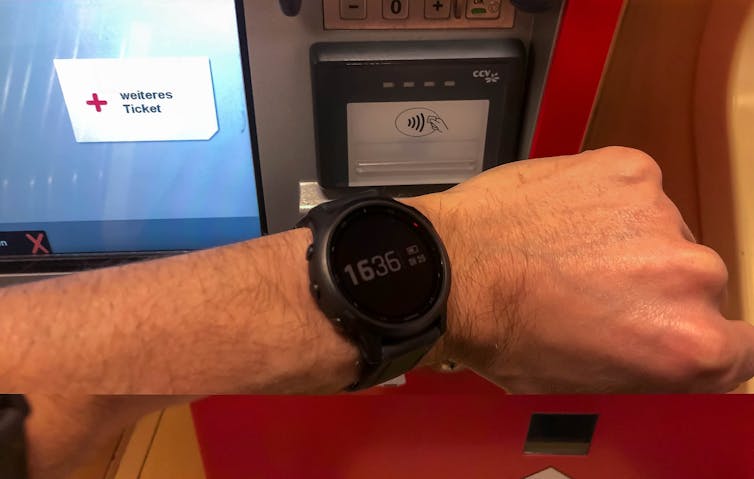Source: The Conversation (Au and NZ) – By Neil G Sipe, Honorary Professor of Planning, The University of Queensland
With fewer people using public transport and more working from home due to the COVID pandemic, public transport agencies need to do everything they can to encourage more people to use their services. An essential step is to make the ticketing and payment process as easy as possible. That means it needs to keep pace with emerging technology and trends.
Some agencies, such as Singapore’s Land Transport Authority, have done so. Others have not – the myki card system in Victoria falls into this category. The state government has announced a “best practice” system will replace myki when its operator’s contract expires later this year.
Myki represented state-of-the-art technology when it replaced paper tickets a decade or so ago. It’s the ticketing system for travelling on trains, trams and buses in Melbourne, on trains from Melbourne to certain regional destinations, and on buses in major regional centres. However, the system now clearly needs to be updated.
This article outlines what a “best practice” replacement should look like. The new system must overcome the limitations that have emerged with myki, add the best features developed in other cities and build in the flexibility to keep up with the evolution of urban transport.
Read more:
Electric on-demand public transport is making a difference in Auckland – now it needs to roll out further
What’s wrong with myki?
The first problem with myki is its restricted payment options. It does not allow direct payment with a credit or debit card when getting onto a train, tram or bus.
In 2019, the system was updated to allow direct payment for a trip using a digital myki on Android phones, but not Apple phones. This means about half of Victoria’s potential public transport users cannot use their phones to pay for their trip. (Nationally, the split is 54% Android and 46% Apple – no city-level data are available.)
While Apple users can now automatically top up their myki card using their phones, they must still buy a physical myki card for $6, or $3 concession.
Second, while not directly impacting users, the myki terminals at public transport stations and on buses and trams use 3G wireless technology. This wireless network is due to be shut down in June 2024. Terminals will have to be updated to the 5G network.
Third, it is not easy for visitors to Victoria to understand the system. Before they can board public transport, they must first stop to buy a myki card for $6 (available at only some stations and retail outlets) and add money to cover the fare.
Read more:
We subscribe to movies and music, why not transport?
What is current best practice?
Contactless payment with a credit card, smartphone or smart watch is becoming standard practice on public transport. The pandemic accelerated this trend because operators wanted to minimise contact points associated with either cash payments or buying a physical ticket or card.
Two large public transport systems in London and Amsterdam are now contactless and cashless. In Australia, Sydney and Adelaide have contactless payment in place.

Shutterstock
Sydney’s example is worth noting because, while upgrading to contactless payment options, it has maintained the use of the Opal card as well as the option of buying a single-trip ticket. Thus, Sydney has kept the payment options as broad as possible so as not to disadvantage any potential users. Many systems lack this flexibility — particularly those that have gone contactless and cashless.
Something that is often overlooked, but is a critical feature of exemplary public transport systems, is a well-designed seamless website or app that supports the payment system. Infrastructure Victoria highlighted this issue in its report, Better Public Transport Fares for Melbourne.
And how will public transport evolve?
Mobility as a service (MaaS) is one of the emerging trends in public transport. The goal is to allow users to have access to a range of transport options in a single app. However, COVID has slowed its progress.
Read more:
All your transport options in one place: why mobility as a service needs a proper platform
Most of the cities that have implemented mobility as a service are in Europe. They include: Vienna, Austria; Antwerp, Belgium; Turku, Finland; the West Midlands region in Britain; the Flanders region of Belgium; and all of Switzerland. Tokyo also has it.
However, many cities across the globe are hopeful of implementing the idea. Among them is Sydney, which is trialling the bundling of transport services – including taxis, ride-share vehicles and e-bikes – in one transaction. Public transport agencies are attempting to provide access to the full range of traditional public transport (trains, trams, buses and ferries) and non-traditional options (taxis, e-bikes, e-scooters, rideshares and so on).
Another innovation being trialled in Singapore is “hands free” ticketing. It uses radio frequency identification technology to detect a commuter’s fare card when passing through a sensor. This will do away with the need for pausing to tap on with a phone, card or watch.

Marco Verch/Flickr, CC BY
Read more:
For Mobility as a Service (MaaS) to solve our transport woes, some things need to change
3 things Victoria’s new system must deliver
Victoria’s next public transport ticketing contract should deliver the following:
-
multiple payment options, including smartphones, smart watches, bank cards and single-ticket cash purchases, so users who don’t have smart devices or credit cards aren’t disadvantaged (though this represents a small minority of riders, they are often the most dependent on public transport)
-
5G wireless technology to connect the ticketing network
-
the flexibility to accommodate a MaaS model that allows third-party integration with a single interface where users can pay for all their transport options.
Only a system that does all of the above will deliver on the promise of a “best practice” replacement for myki.
![]()
Neil G Sipe has received funding from the Australia Research Council.
– ref. Victorians won’t miss myki, but what will ‘best practice’ transport ticketing look like? – https://theconversation.com/victorians-wont-miss-myki-but-what-will-best-practice-transport-ticketing-look-like-197620







